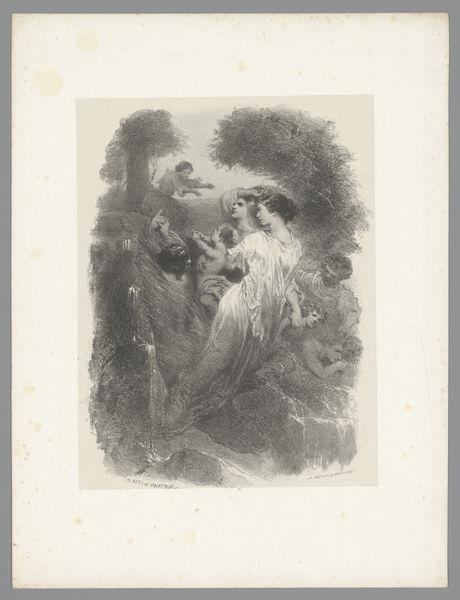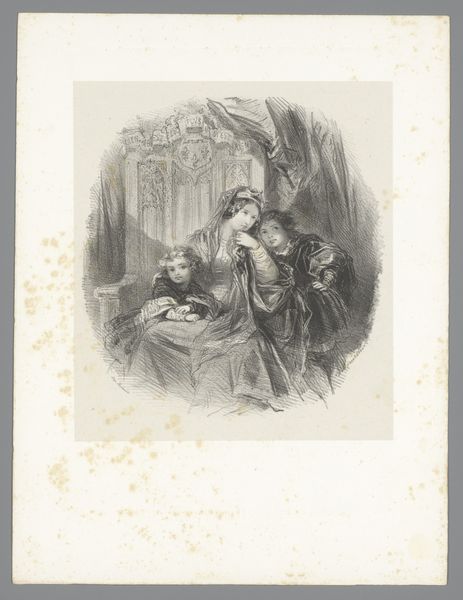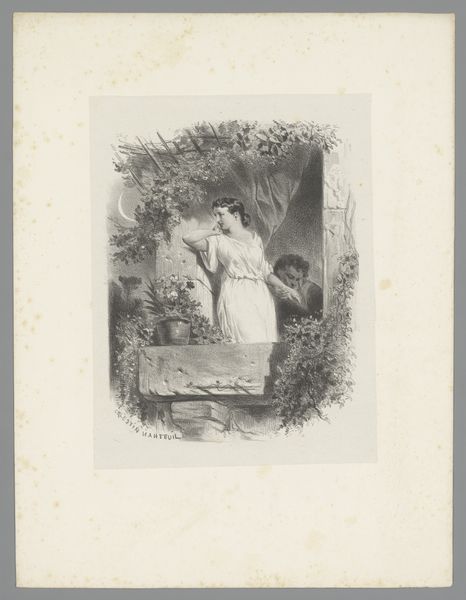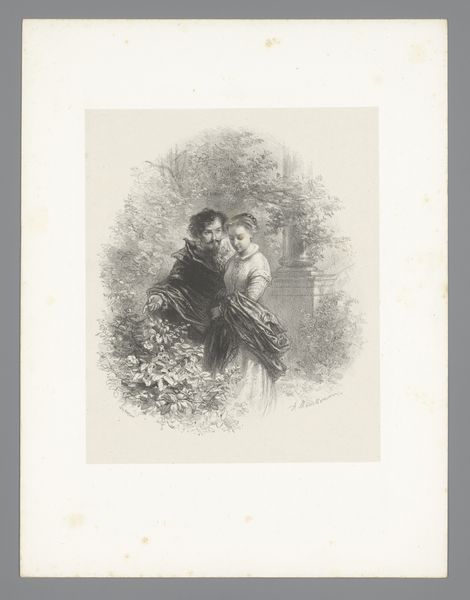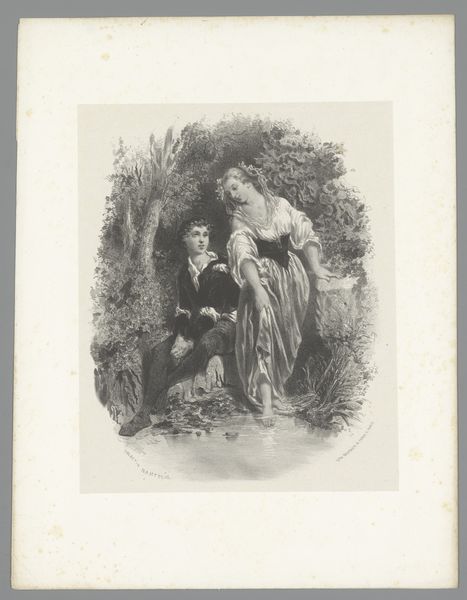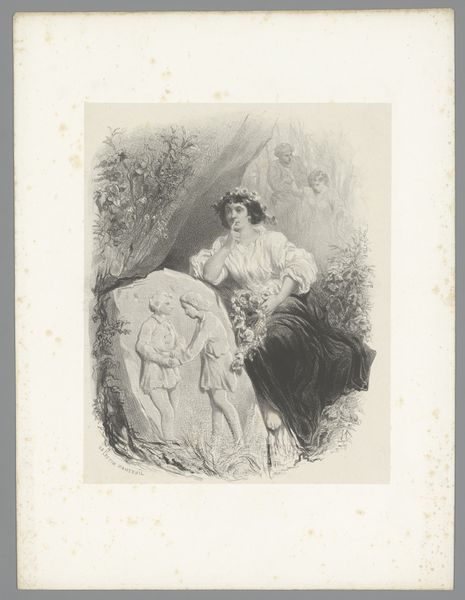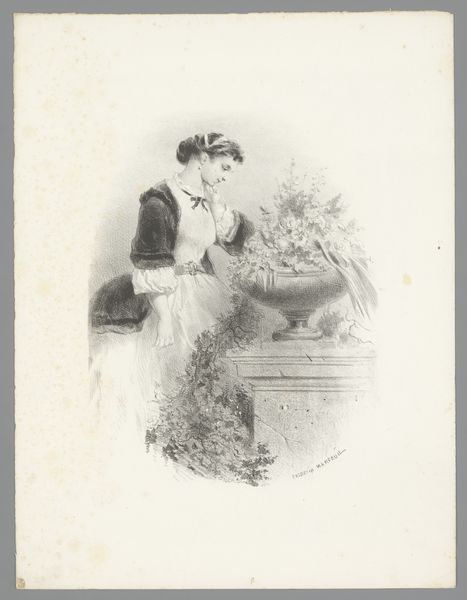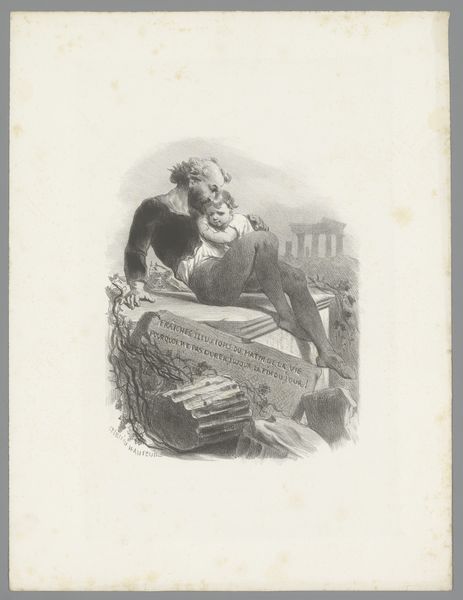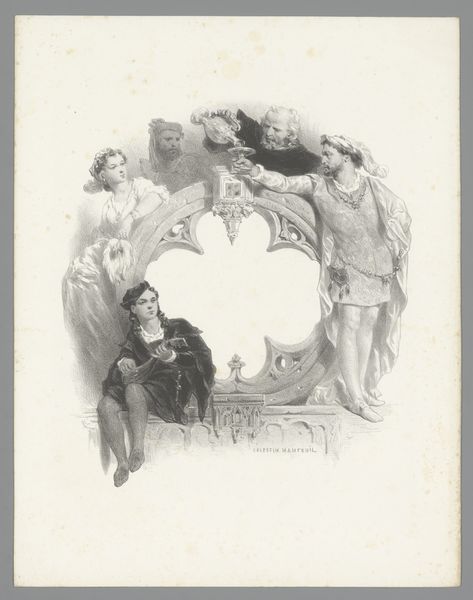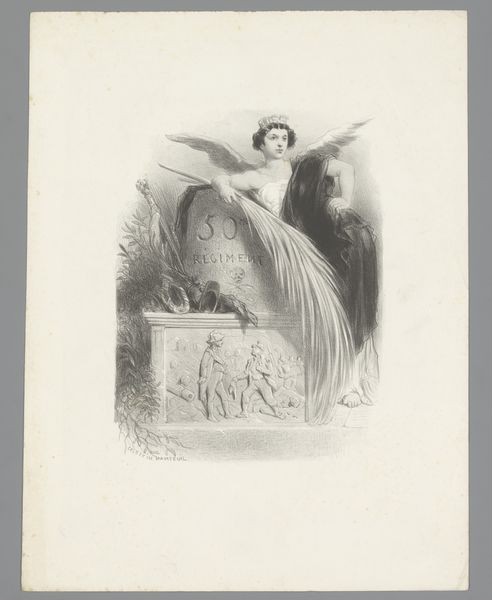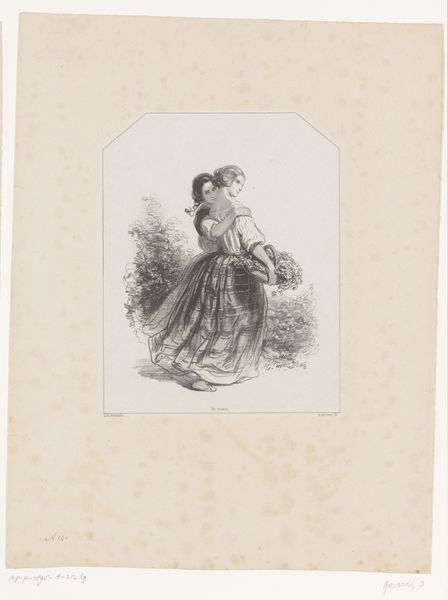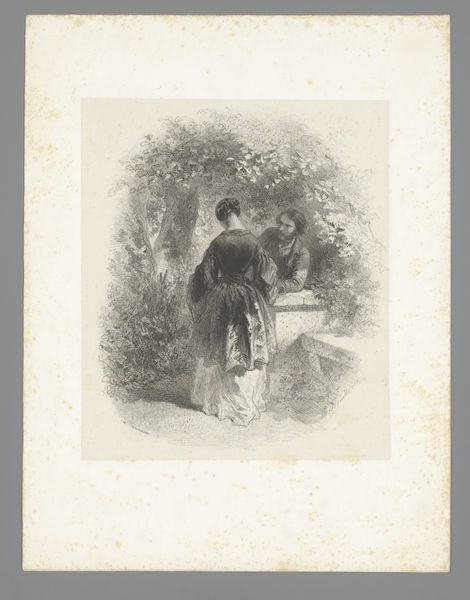
Dimensions: height 358 mm, width 275 mm
Copyright: Rijks Museum: Open Domain
Editor: Here we have "Moeder en kind met engel," or "Mother and Child with Angel" by Célestin Nanteuil, made sometime between 1851 and 1865. It's an engraving, a print. The image has a haunting feel. There's an ethereal angel figure, a mother embracing her child, and… what appears to be a man working below. How do you read into the work? Curator: I'm immediately drawn to the materiality of the print itself. It’s an engraving, meaning it involved skilled labor, the physical act of carving into a metal plate to reproduce an image. Look closely at the lines, the cross-hatching—how does that process contribute to the "haunting feel" you observed? Editor: I guess I didn’t really think of it that way. I was focused on the images *in* the picture: angel, mother, child… not *how* it was produced. The intricacy of the lines does add a somber tone… was printmaking a common medium for devotional images at this time? Curator: Yes, and the *reproducibility* is key. Prints made art accessible, commodified even. Suddenly these sentimental, romantic scenes, once exclusive to wealthy patrons, could circulate widely. What effect do you think mass reproduction has on our understanding or appreciation of this image, of motherhood and angels? Does the image, in becoming widespread, acquire a kind of... cultural labor? Editor: That makes a lot of sense! It's no longer a unique object; it's multiplied, consumed, and reshaped into common beliefs. By making this image into an easily-produced artwork, the meaning gets diffused across society… Curator: Exactly. Consider the contrast: a craft with skilled labor to churn out art by mechanical means! What started as perhaps devotion becomes a commercial object. The artist, Nanteuil, isn't simply portraying something but is engaged in a mode of artistic production that shapes its reception. Editor: That's a great way to look at it; I hadn't thought about the means of production impacting the subject in the work. Thank you! Curator: It's a crucial thing to observe - production shaped so much artwork, especially during the Romanticism period. It truly changed the artistic landscape forever!
Comments
No comments
Be the first to comment and join the conversation on the ultimate creative platform.
